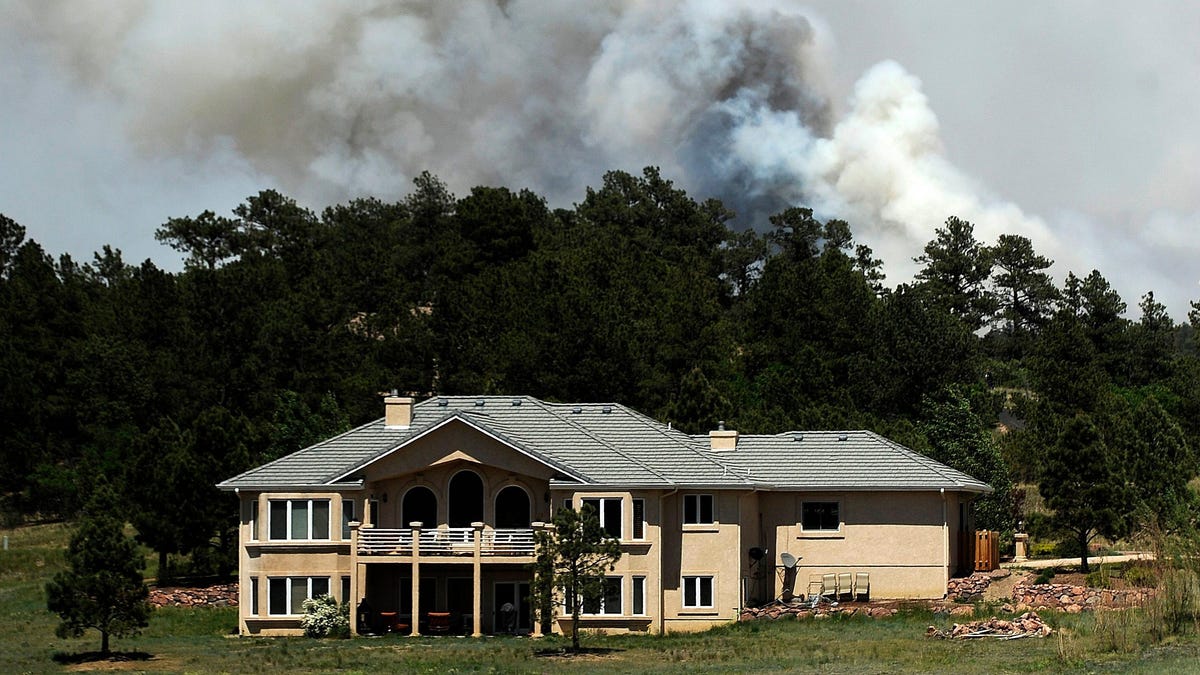Even after smoke from a wildfire has visibly cleared, lingering toxins indoors can tank air quality and threaten our health. Harmful chemicals stick around on surfaces and release into the air—and, new research found, air filters won’t get rid of them.
In a study published this month in Science Advances, scientists documented how smoke leaves behind chemicals known as volatile organic compounds, or VOCs, that remain on surfaces inside a home. Those chemicals are emitted back into the air for days after wildfire smoke has cleared up outside, polluting the air inside of a home and exposing residents to various health risks. Air purifiers didn’t get rid of these chemicals, but the researchers found that cleaning surfaces—mopping floors and washing walls—did significantly reduce the VOCs that could be detected in the air.
For their experiment, the researchers injected smoke for two weeks into a test house and monitored the air quality. They monitored the indoor air for levels of formaldehyde—a chemical that can irritate the respiratory system—as well as formic acid, which irritates the eyes and nose. They also monitored levels of furan, a chemical that is possibly a carcinogen. These chemicals are VOCs.
They tried a variety of methods to get rid of VOCs in the air in the test home, including running air purifiers, and most of them did little to permanently improve air quality. But once the researchers dusted, vacuumed, and mopped with a commercial cleaner, they recorded much lower levels of VOCs in the air. After cleaning, the amount of formic acid in the air decreased by 50%, formaldehyde by 32%, and furan by 19%.
Delphine Farmer, a study author and professor at Colorado University, explained that team used monitors like mass spectrometers to monitor changes. “We did quite a few experiments looking at air cleaners, and they are very effective for particles in the air,” she told Earther. “But we found they are not very effective for any of the volatile organic compounds for any of those gasses.”
The researchers opened windows and doors to ventilate the home they were experimenting in, but they found that the VOC levels increased again as soon as they stopped ventilating. The only permanent solution was cleaning. Farmer noted that the need to strategically clean indoors after wildfires will be relevant to ever more people across North America, referencing the apocalyptic wildfire events throughout the continent this summer. Even people far from a fire were affected, as clouds of smoke spread from Canada to the U.S. Northeast.
When asked about improving indoor air during a smoke event that lasts for days, Farmer suggested an air purifier during the smoke event to decrease the amount of particulate matter in the air, and to clean surfaces for VOCs soon afterward. “The longer you wait to clean, the longer you’re going to be exposed,” she said.
These results are relevant to other, less dramatic events that affect indoor air quality. “Although this paper focuses on wildfire smoke, our results may apply to other air pollution scenarios, including intensive cooking, infiltration of heavy urban smog, cigarette smoking, or other indoor emission activities,” the team said in a statement.
